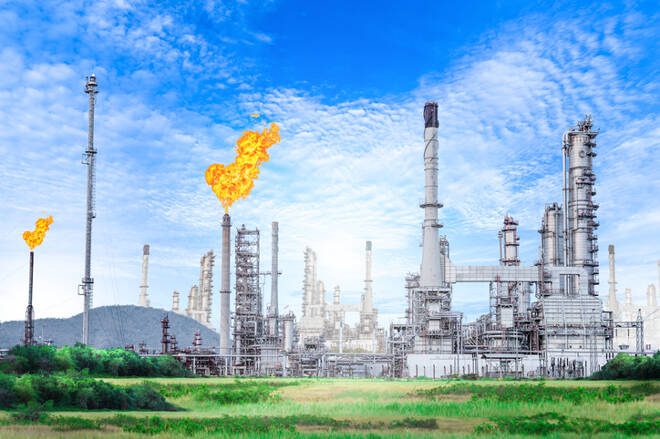Advertisement
Advertisement
Natural Gas Price Fundamental Weekly Forecast – No End to Selling in Sight Unless Weather Changes Dramatically
By:
According to Mobius Risk Group, on a national level, the first 20 days of June have been 1.5% cooler than three-year norms and 20.5% cooler than the same 20 days last year.
Natural gas futures fell last week to multi-year lows, led by a plunge in spot gas prices, a spotty weather forecast and a greater-than-expected weekly storage build. Prices hit a four-year low last week. Prices aren’t likely to recover until the weather services put terms like “lingering heat” or “heat dome” into their forecasts. Furthermore, the heat has to cover larger, more populated areas.
Cash Market Sinks
Many of the major U.S. supply hubs are showing $1.00 handles for spot gas. In the Midwest, Chicago Citygate dropped to $1.91. Spot gas in the Rockies also plunged with Kingsgate averaging only 85 cents. In California, SoCal Citygate tumbled to 1.135.
Unusual Weather in June
According to Mobius Risk Group, on a national level, the first 20 days of June have been 1.5% cooler than three-year norms and 20.5% cooler than the same 20 days last year.
Mobius Risk Group went on to say that six out of the eight prior years have ranked in the top 10 warmest Junes over the past 69 years, while June is on track to rank a lowly 34th warmest. “Weather is, and will remain, the most dominant force affecting near-term prices,” the Houston-based firm said.
U.S. Energy Information Administration Weekly Storage Report
Finally, the U.S. Energy Information Administration (EIA) reported a 115 Bcf injection. This was above the consensus estimate of 105 Bcf. Inventories as of June 14 are now at 2,203 Bcf, 209 Bcf above last year and 100 Bcf below the five-year average.
Bloomberg estimated an injection range between 96 Bcf and 113 Bcf, and a median of 105 Bcf. Reuters forecast a range of 96 Bcf to 115 Bcf, with a median of 105 Bcf. Natural Gas Intelligence predicted a build of 105 Bcf.
Last week, August natural gas settled at $2.169, down $0.212 or -8.90%.
Weekly Forecast
According to NatGasWeather for June 21 to June 27, “Showers and thunderstorms will continue across the northern US the next several days with temperatures mostly comfortable with highs of 70s and 80s. The southern half of the US will be very warm to hot with high pressure overhead, resulting in highs of 90s to 100s hottest over the Southwest and into Texas. Next week will bring increasing heat across the southern 2/3 of the US w/90s and 100s, potentially as far north as Chicago late in the week. Overall, demand will be increasing to moderate.
The situation is also beginning to look bleak for the fall with traders already pricing in likely U.S. LNG shut-ins, largely because of fears of overflowing gas storage in Europe. “Many U.S. LNG cargoes, however, are being redirected to other global destinations in search of higher returns,” EBW said. “It is also possible that LNG tankers may transform into floating storage this fall, allowing the U.S. market to continue to load cargoes. If demand can be sustained, Nymex prices can surprise to the upside.”
The first leg of any rally is likely to be short-covering. There is going to have to be a dramatic change in the fundamentals in order to attract enough buyers to change the main trend to up.
About the Author
James Hyerczykauthor
James Hyerczyk is a U.S. based seasoned technical analyst and educator with over 40 years of experience in market analysis and trading, specializing in chart patterns and price movement. He is the author of two books on technical analysis and has a background in both futures and stock markets.
Did you find this article useful?
Latest news and analysis
Advertisement
